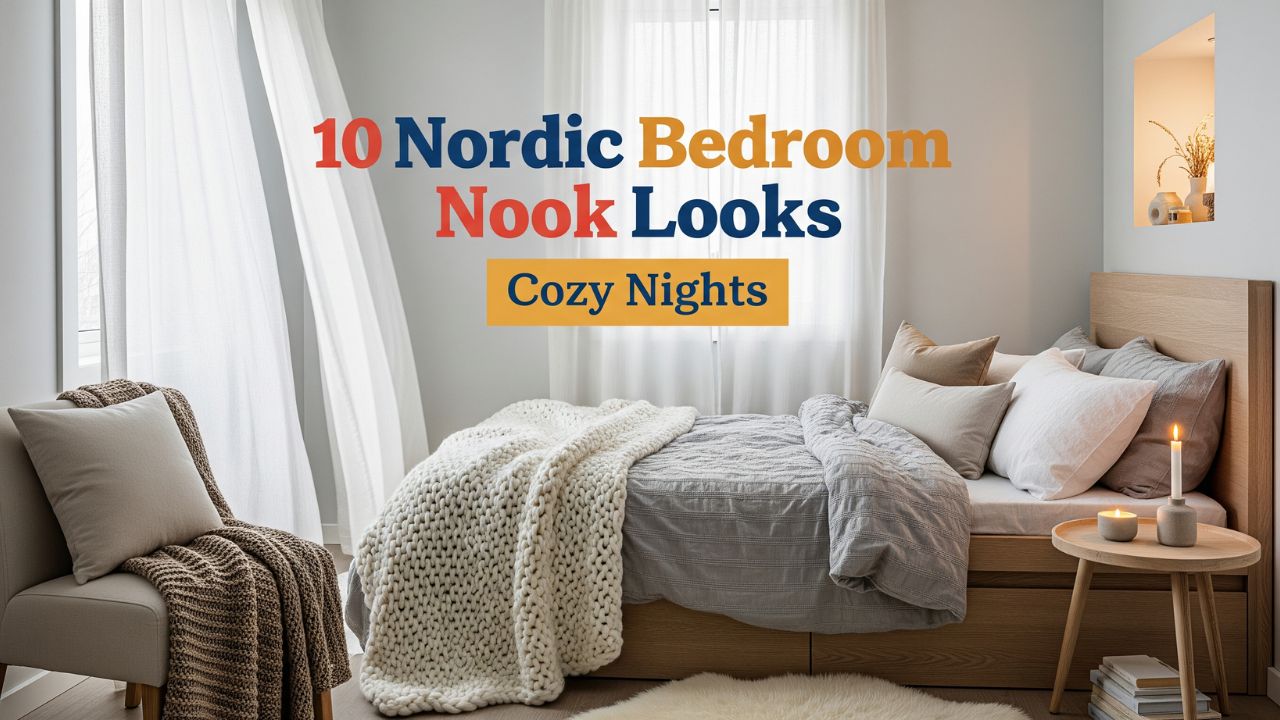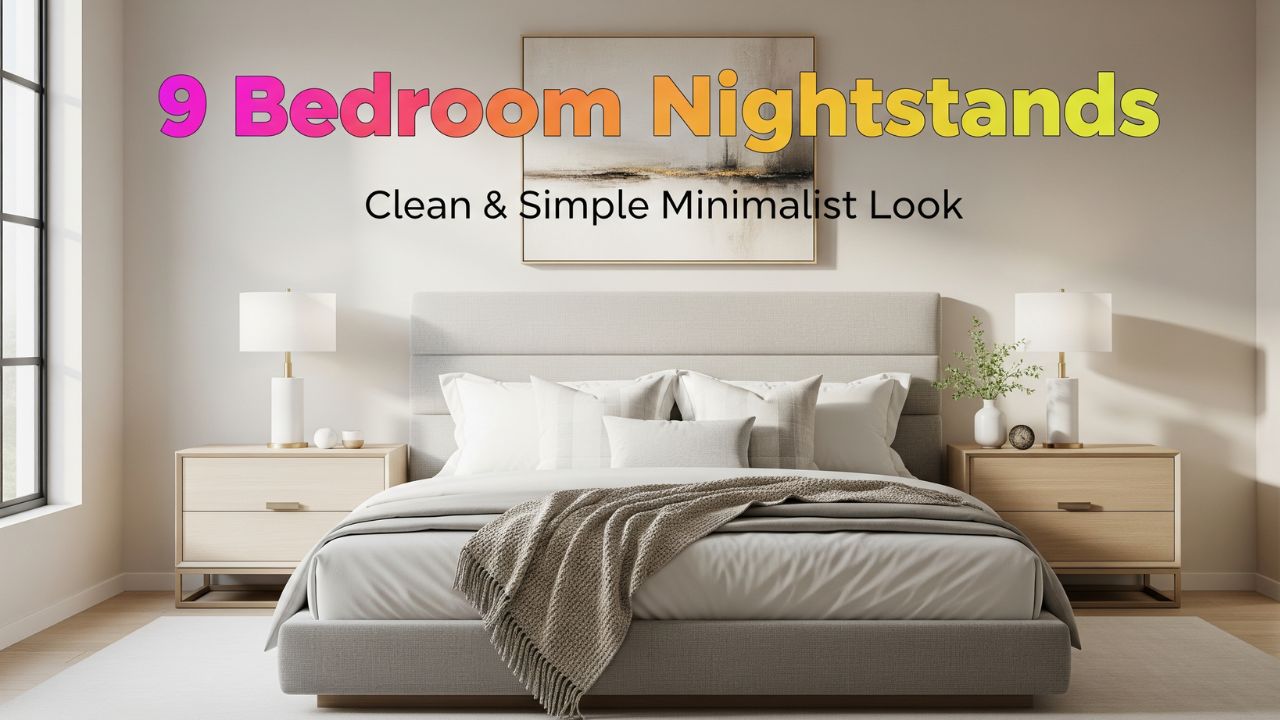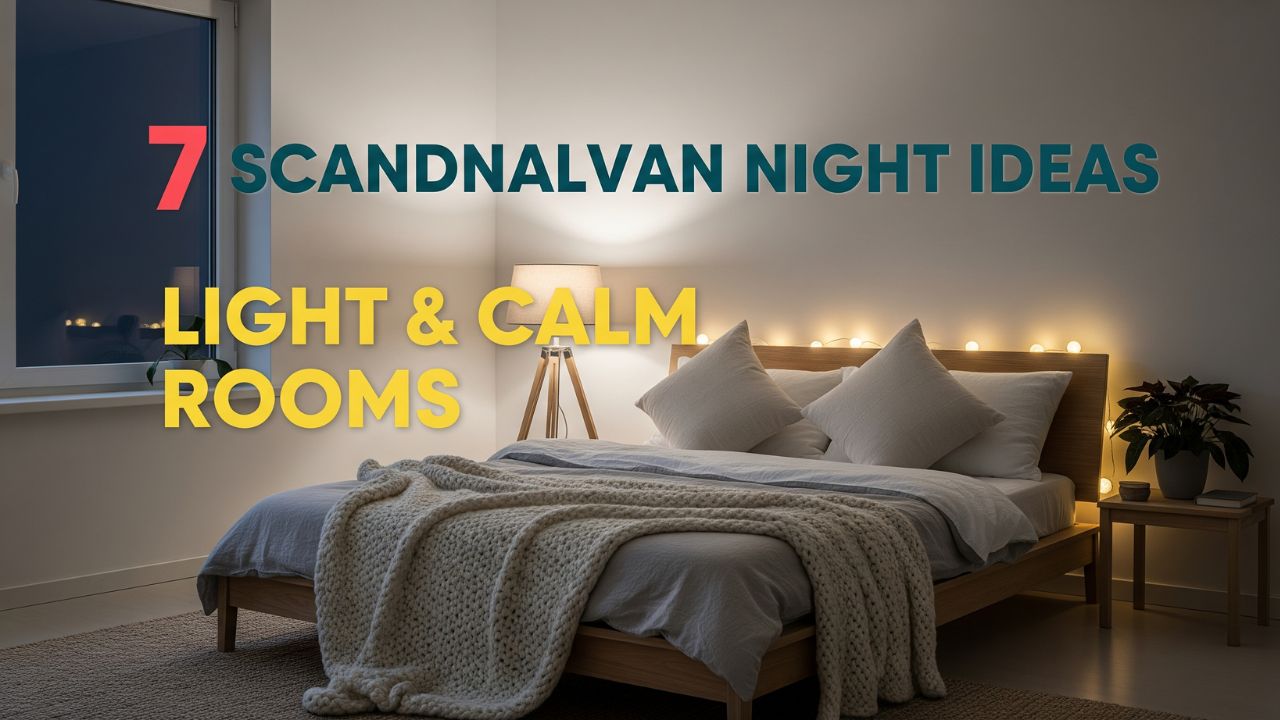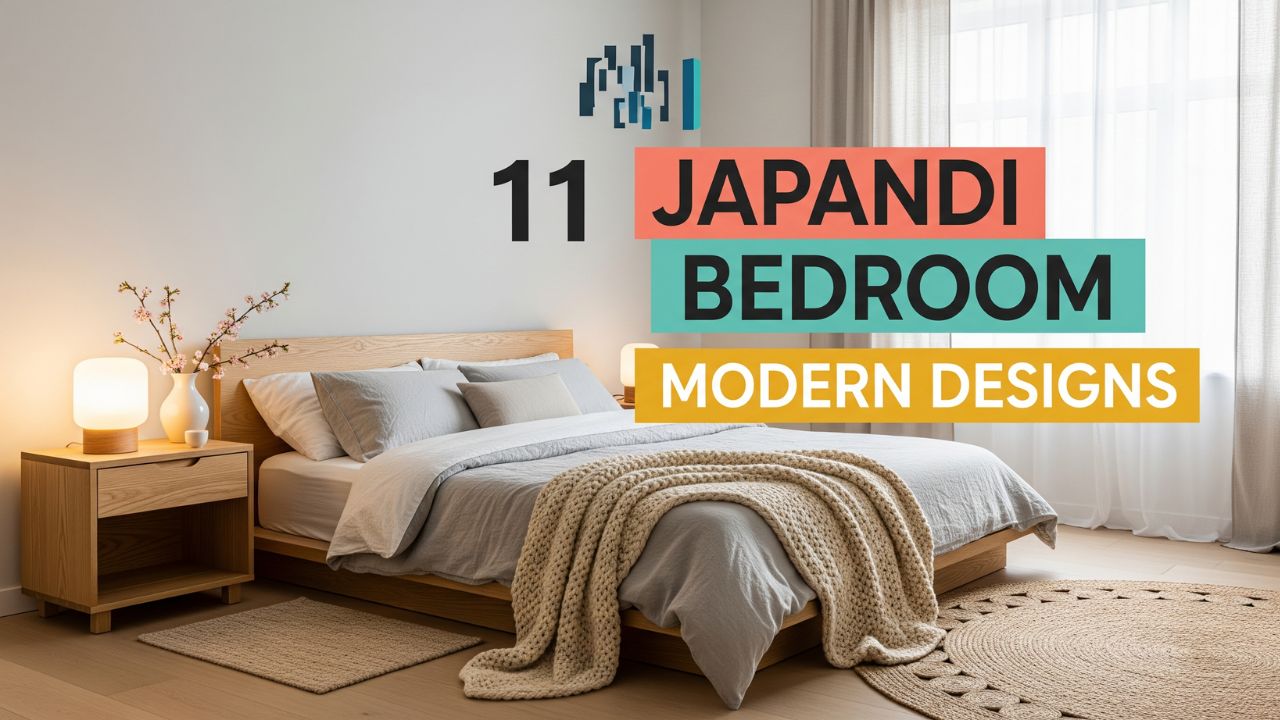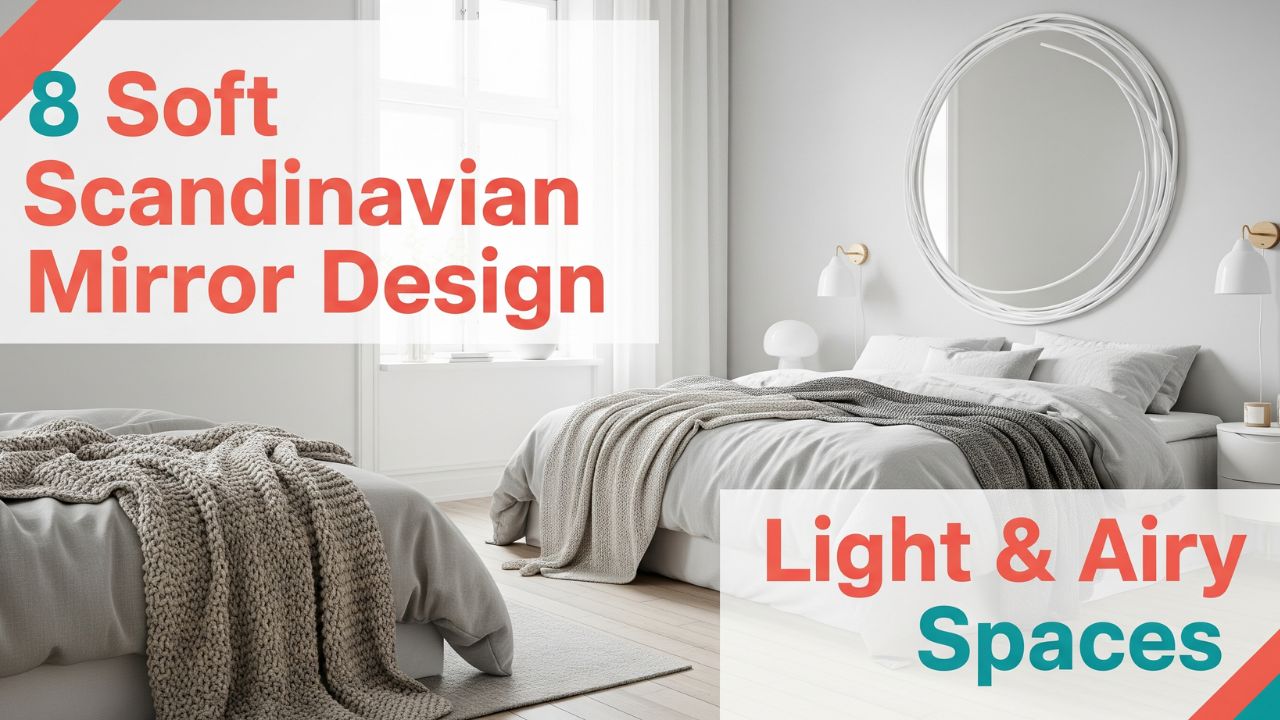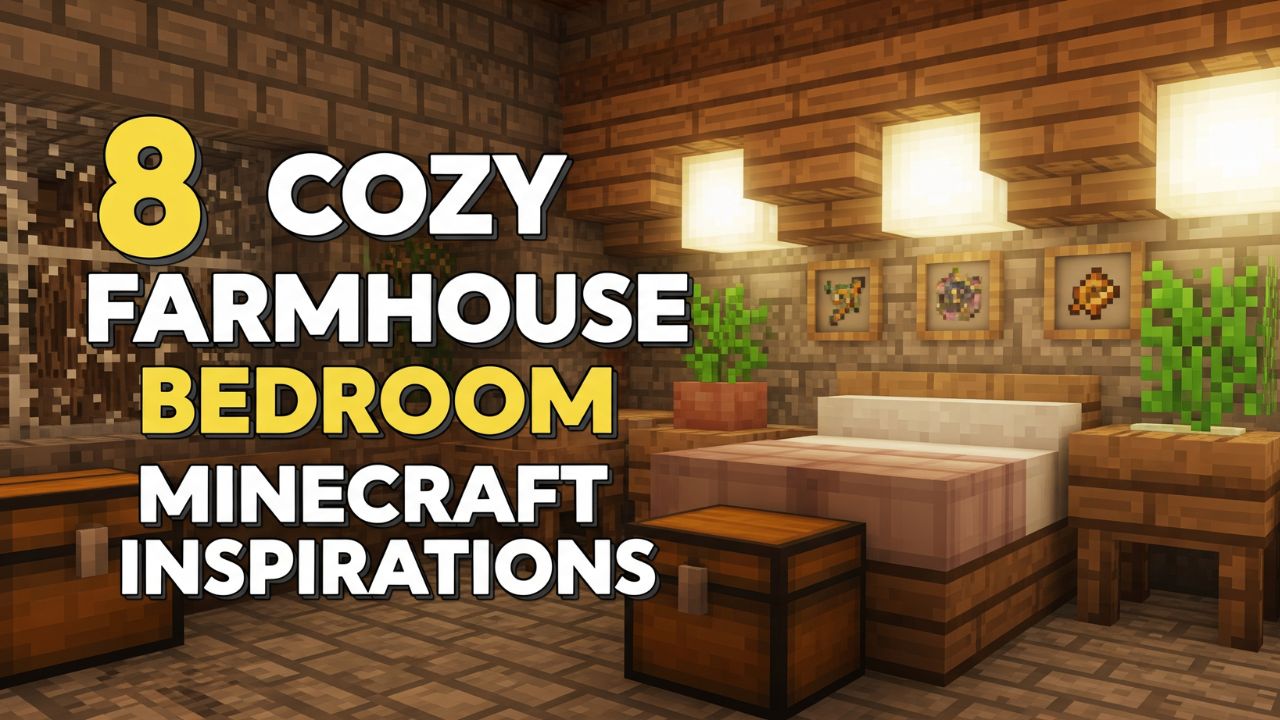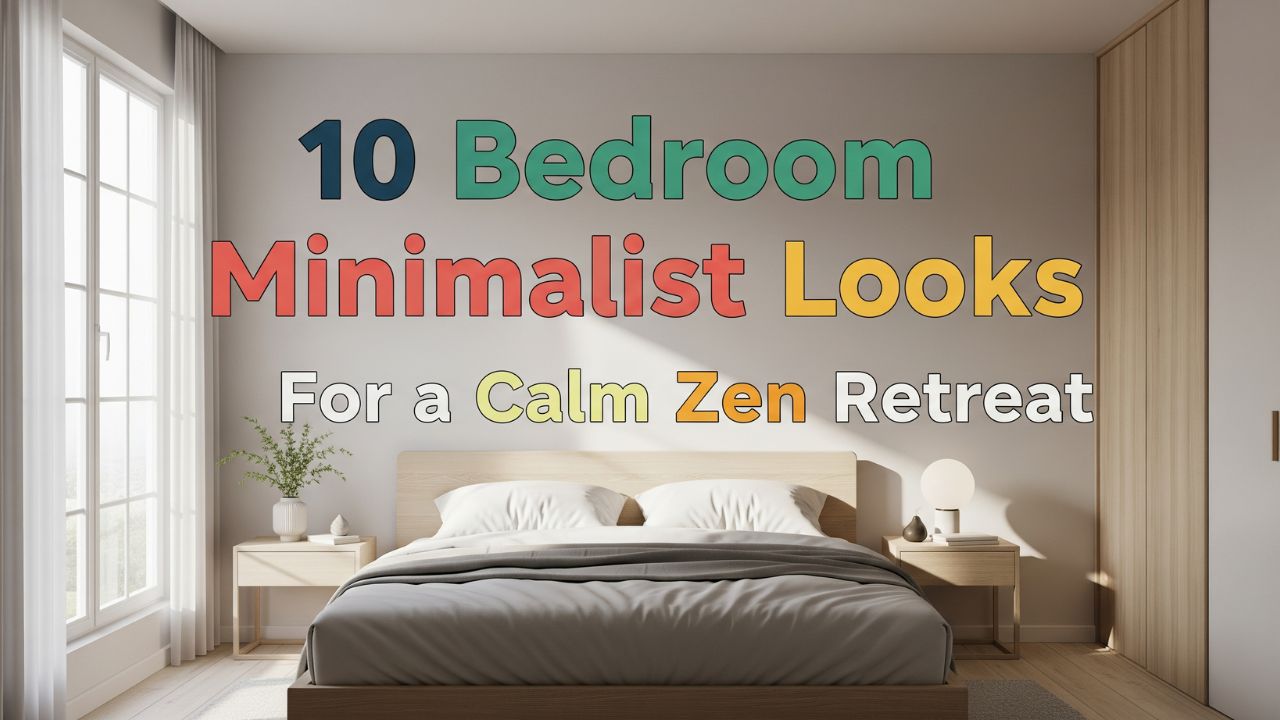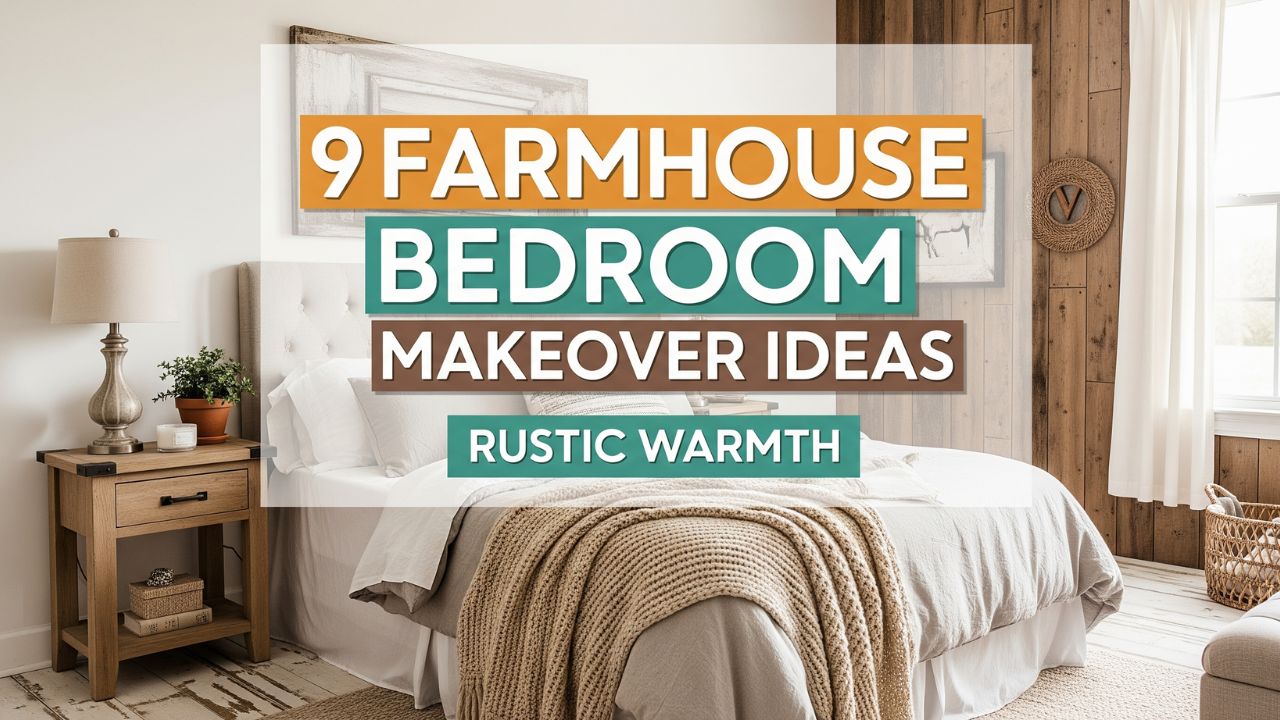When it comes to transforming your living space, one of the most impactful decisions you can make is choosing the right color palette. Among the myriad of color options, green stands out as a timeless and refreshing choice for your living room.
Whether you want to create a tranquil retreat or inject a touch of nature into your home, green is the perfect color to breathe life into your space.
Green is often associated with nature, calmness, and renewal, making it the ideal color to incorporate into your living room design. It has a unique ability to soothe the mind while adding a sense of vitality and warmth to the room.
But what is it about green that makes it such a captivating choice for interior design? Is it just a trend, or does it have deeper psychological and cultural significance?
In this article, we’ll explore 13 fresh and stylish green living room inspirations, from light, minty greens to deep, rich emerald hues. We’ll dive into color theory, explore myths surrounding green interiors, and provide practical tips to help you incorporate this versatile color into your living room.
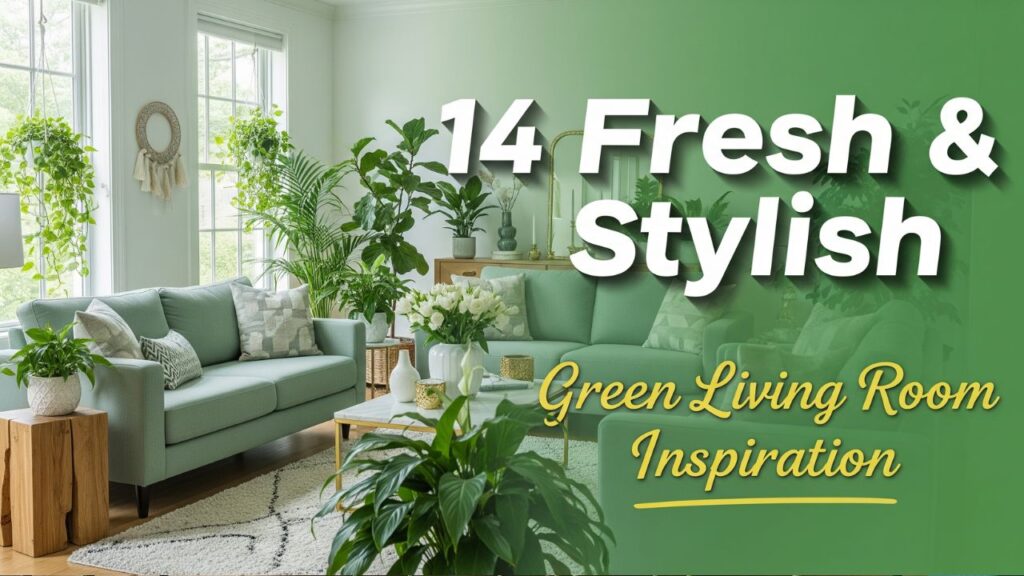
Table of Contents
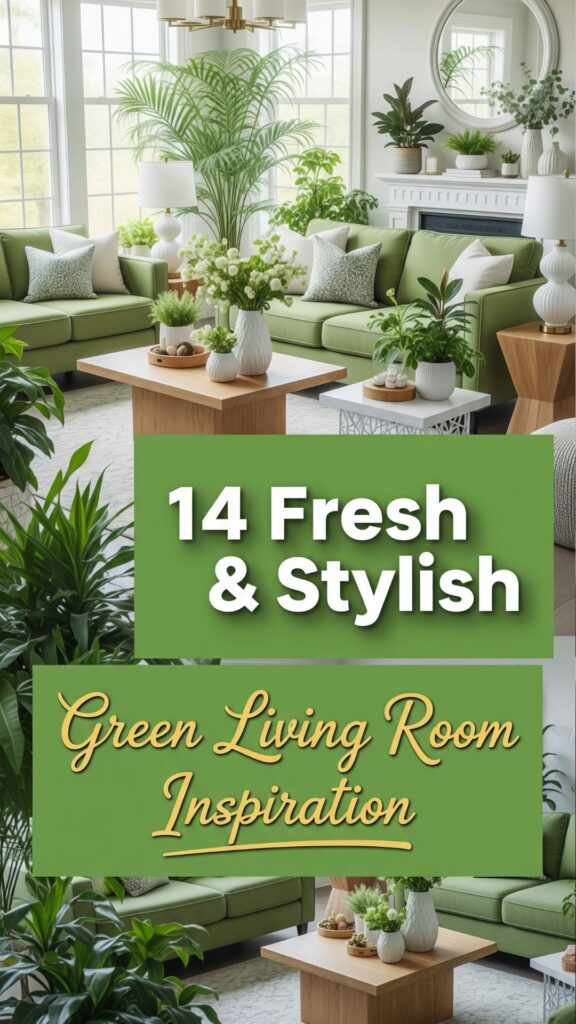
13 Green Living Room Inspiration
1. The Psychology of Green: Why It Works
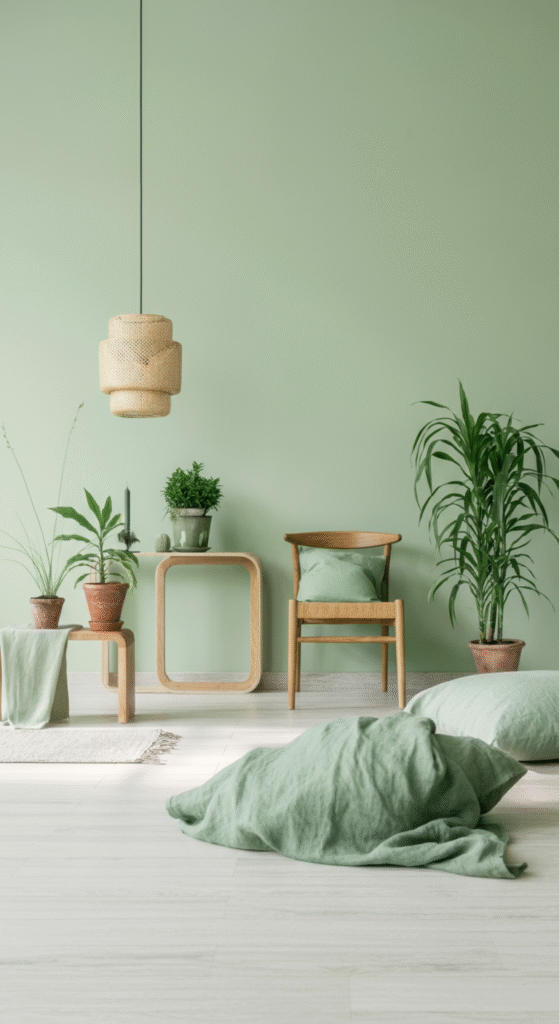
Before we dive into the different shades of green and how to use them, it’s important to understand why green is such a popular choice.
The color green is often linked to balance, harmony, and health. Studies have shown that being surrounded by green can reduce stress, lower heart rates, and boost mood.
In the context of interior design, this means that green can help create a peaceful atmosphere that makes you feel grounded and at ease.
Whether you’re looking to unwind after a busy day or host a social gathering, green living rooms can provide the perfect environment to do so.
2. Shades of Green: From Mint to Forest
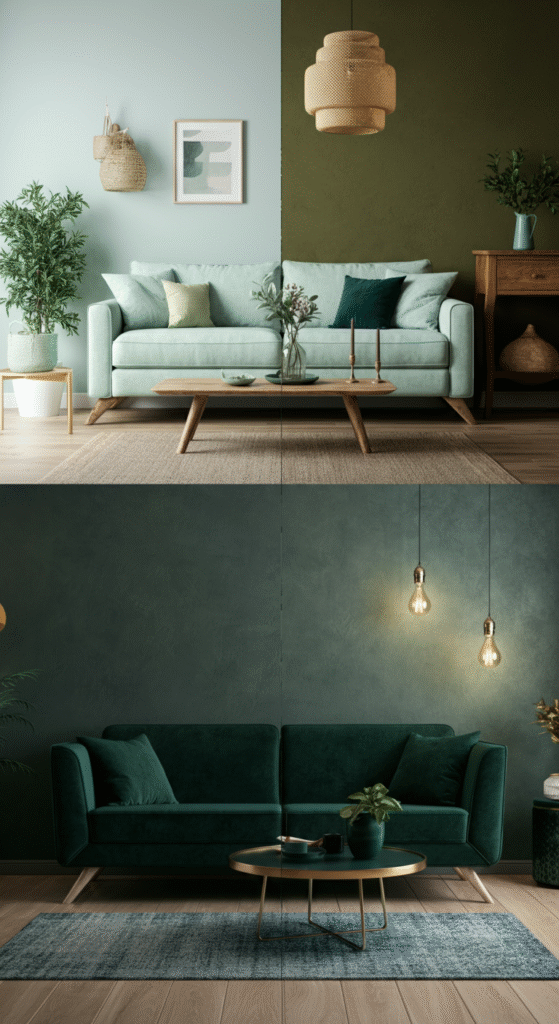
Green isn’t just one shade—it’s a spectrum. From the soft, delicate hues of mint green to the deep, earthy tones of forest green, each shade has a different effect on a room’s ambiance.
- Mint Green: Light and airy, mint green is a great choice for smaller spaces or rooms that don’t get a lot of natural light. It creates a refreshing, modern atmosphere that works well with white or beige accents.
- Olive Green: Olive green is perfect for creating a more rustic or Mediterranean-inspired living room. This earthy hue pairs beautifully with wooden furniture and warm-toned fabrics.
- Emerald Green: Bold and luxurious, emerald green can make a dramatic statement in your living room. It works well with gold or brass accents and is great for creating a high-end, sophisticated look.
- Forest Green: If you’re aiming for a more intimate, cozy space, forest green is an excellent option. Its rich, deep tones make it perfect for larger living rooms or spaces that need a more grounded feel.
3. Green and Natural Light: A Dynamic Duo
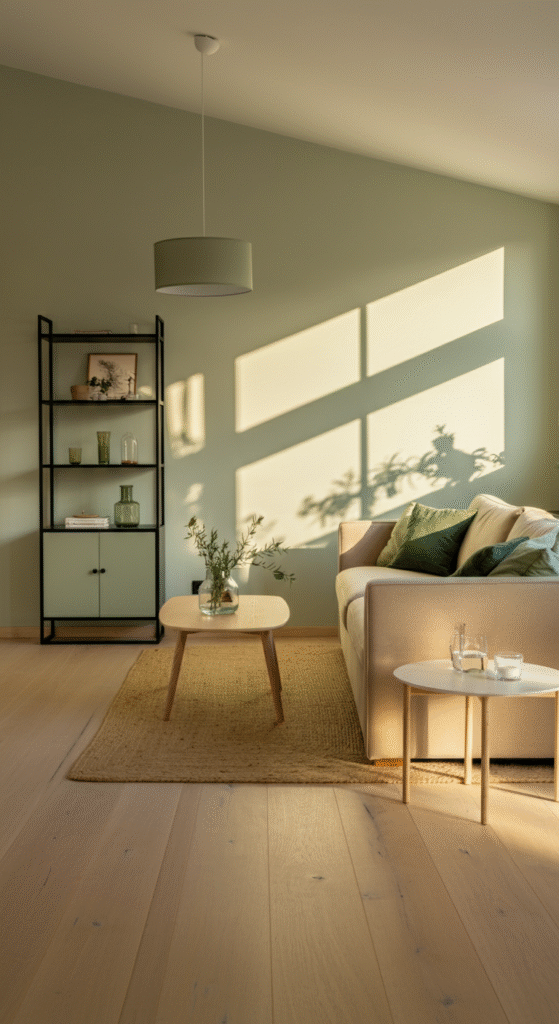
When working with green in your living room, the amount of natural light your room receives plays a significant role in how the color will look. Natural light can brighten up the room and bring out the freshness of green hues, while a lack of natural light can make darker greens feel heavy or dull.
- Well-Lit Spaces: If your living room has plenty of windows and sunlight, you can experiment with deeper shades of green, such as forest or emerald, without overwhelming the space. These shades will look vibrant and rich when paired with natural light.
- Low-Light Spaces: For rooms that don’t receive much sunlight, go for lighter greens like mint or sage. These colors will help reflect any available light and make the room feel more open and airy.
4. Green Accents: Small Pops, Big Impact
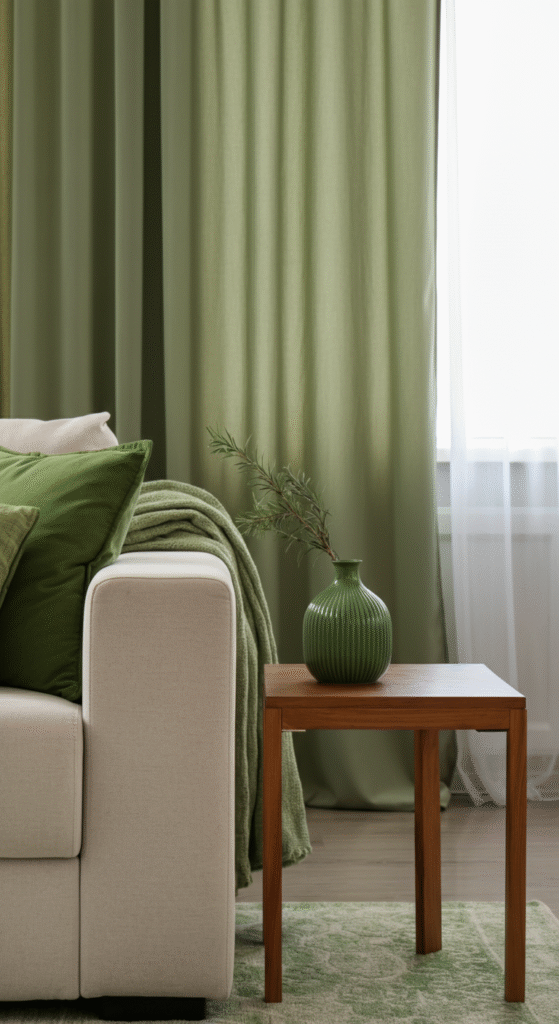
You don’t have to go all-in with a full green wall to embrace this color in your living room. Small accents of green can be just as impactful.
- Throw Pillows & Cushions: A quick and easy way to introduce green into your living room is by adding a few throw pillows or cushions in different shades of green. Whether you mix mint and olive or pair emerald with gold, these accents can instantly refresh the look of your space.
- Green Curtains or Drapes: Adding green curtains or drapes is a subtle but stylish way to incorporate green without overhauling your entire living room decor. Choose a light, translucent green fabric for a soft, ethereal look, or go for a deeper green for a more dramatic effect.
5. Myth or Fact: Green Walls are Overpowering
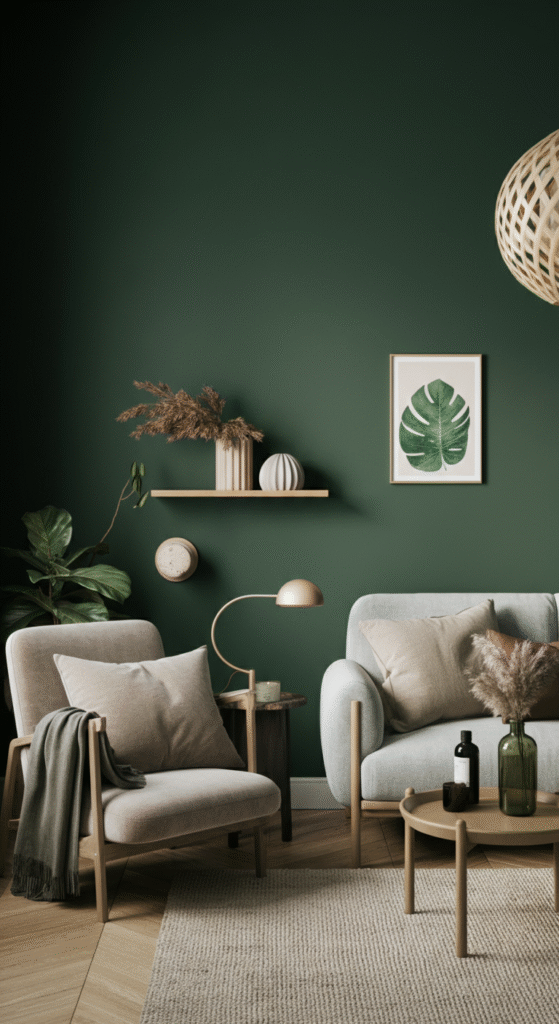
One of the most common myths about green in the living room is that green walls are too overpowering. While it’s true that certain shades of green can feel intense if used in excess, the right shade and the right combination with other colors can actually create a sense of balance.
For example, pairing deep green walls with light-colored furniture and neutral tones like beige or gray can prevent the green from feeling overwhelming. Adding plenty of natural light will also help soften the effect, ensuring the room feels fresh rather than heavy.
6. The Timeless Appeal of Green Sofas
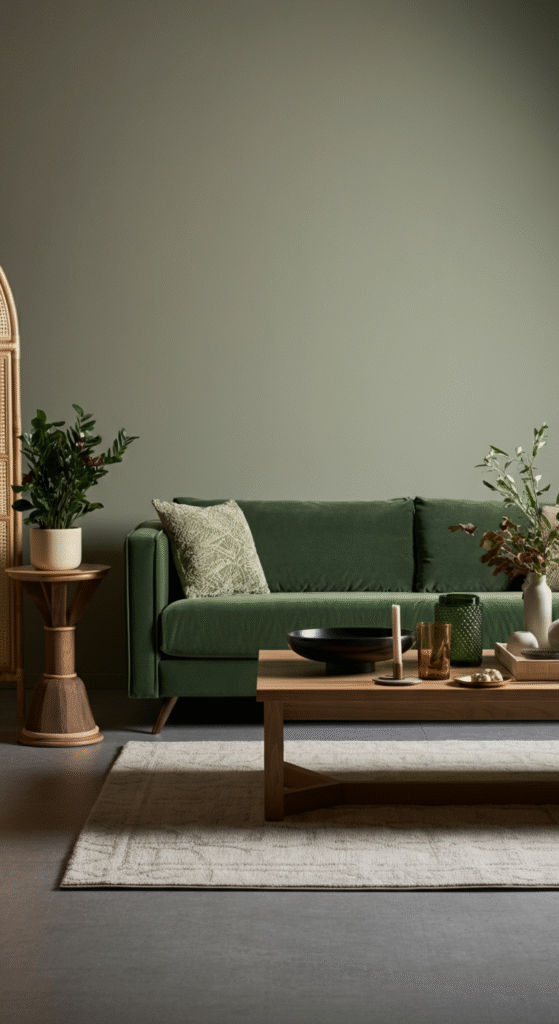
A green sofa is a bold but timeless statement piece that can anchor your living room’s design. Whether you go for a soft pastel green or a deep, dark green, this piece can instantly transform your space.
- Light Green Sofas: A soft mint or pastel green sofa works wonderfully in modern living rooms with minimalist decor. Pair it with white or light gray accents for a sleek, contemporary look.
- Dark Green Sofas: A dark green velvet sofa is perfect for creating a luxurious and elegant living room. Pair it with gold or brass lighting fixtures, dark wood furniture, and lush textiles for an opulent feel.
7. Green Rugs: Layering in Style
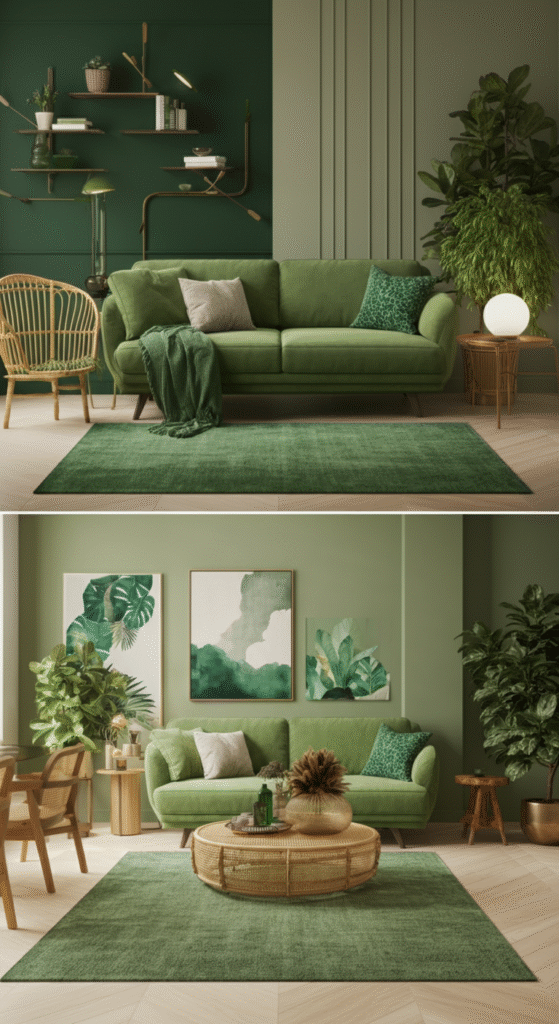
Rugs are another fantastic way to add color to your living room. A green rug can serve as the perfect foundation for the rest of your decor, creating a cohesive and inviting look.
- Light Green Rugs: A light, pastel green rug can brighten up the space and create a soft contrast with darker furniture. It works especially well in minimalist or Scandinavian-inspired living rooms.
- Dark Green Rugs: For a more dramatic effect, dark green rugs can ground the space and add warmth to the room. They pair well with neutral furniture and rich textures like leather or velvet.
8. Green in the Kitchen and Living Room Combo
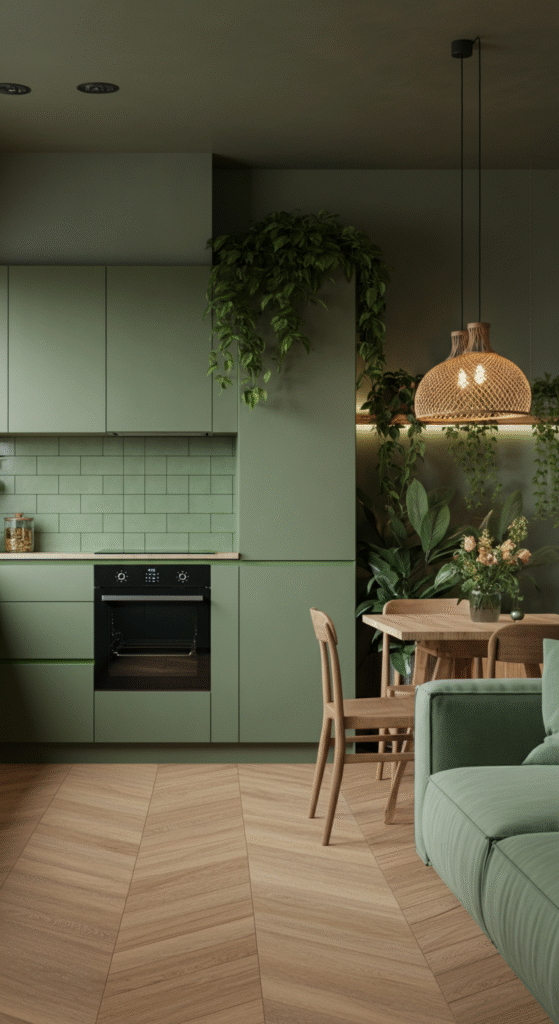
Open-plan living spaces often include a living room and kitchen area. Using green in both areas can create a seamless transition between spaces. Consider adding green elements to the kitchen, such as green tiles or plants, and extend the color to the living room with green furniture or wall accents.
This continuous use of green makes the entire space feel cohesive, ensuring there is a natural flow between the rooms.
9. Green Plants: The Ultimate Companion
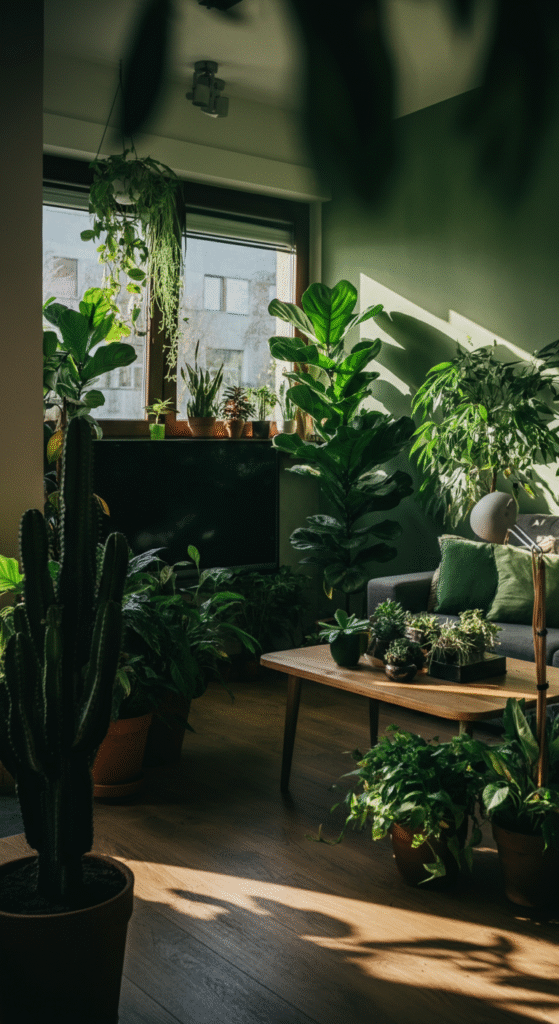
Green plants are, of course, a natural complement to any green living room. Not only do they add to the aesthetic appeal of the space, but they also improve air quality and contribute to a healthier environment.
- Large Indoor Plants: Incorporate large plants, like fiddle-leaf figs or palm trees, in your living room for a lush, tropical vibe. These plants will blend seamlessly with green walls or accents, creating a harmonious balance.
- Small Potted Plants: If you prefer a more minimalist approach, opt for small potted plants like succulents or herbs. These tiny pops of green add personality without overwhelming the room.
10. Mixing Green with Other Colors
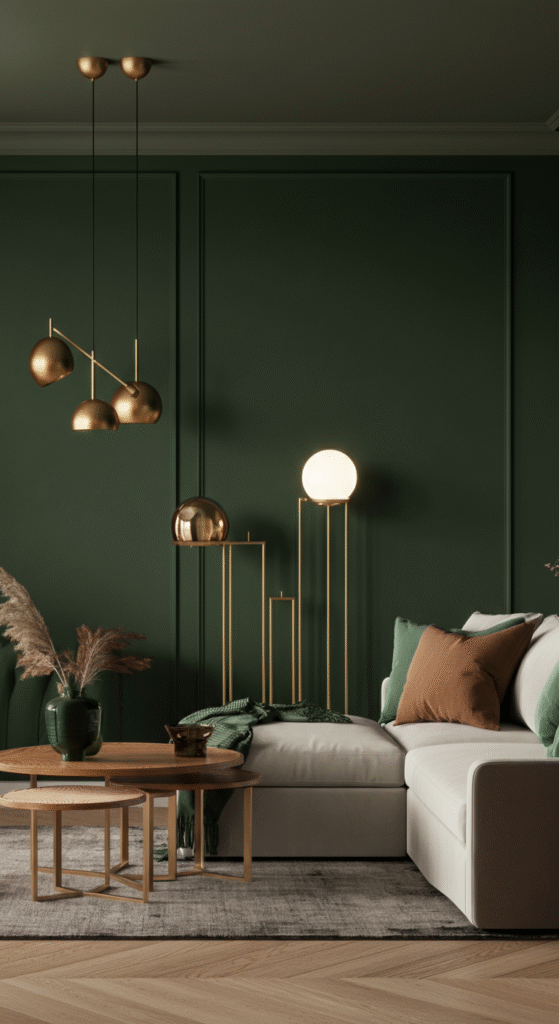
Green pairs well with a variety of other colors, allowing you to create a living room that feels fresh and vibrant.
- Green and White: A classic combination, green and white exude freshness and simplicity. White furniture, walls, or accessories provide a perfect backdrop for the green accents, whether it’s in the form of throw pillows, curtains, or a feature wall.
- Green and Gold: For a more luxurious feel, consider pairing green with gold accents. This combination adds an element of sophistication and works beautifully with deeper greens like emerald or forest.
- Green and Brown: Earth tones like brown and tan work wonderfully with green to create a grounded, natural vibe. This is perfect for a rustic or bohemian living room.
11. Green Living Rooms for Different Themes
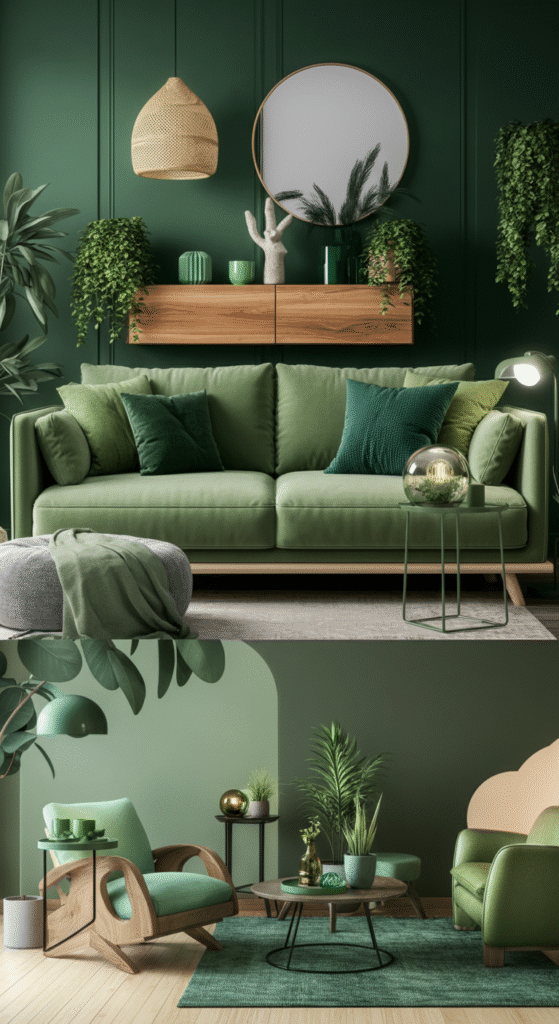
No matter your style, there is a green hue to suit your living room’s theme.
- Modern and Minimalist: Go for subtle greens like sage or mint and pair them with simple, sleek furniture. A green accent wall or a few green accessories will add just the right amount of personality without overpowering the space.
- Bohemian and Eclectic: Embrace rich, vibrant shades of green like teal or emerald, and mix them with warm textiles, layered rugs, and a variety of plant life. This creates a cozy, free-spirited atmosphere.
- Rustic and Farmhouse: Use muted, earthy greens like olive or sage and pair them with wooden furniture, soft textiles, and vintage accessories for a charming, rustic living room.
12. The Right Furniture for a Green Living Room
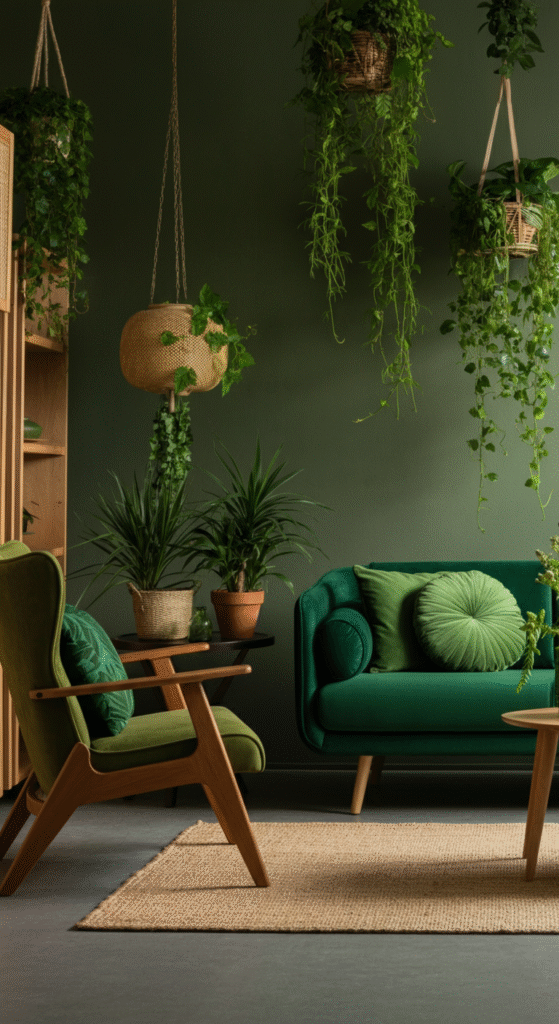
Green works well with a variety of furniture styles. When choosing furniture for your green living room, consider materials and colors that complement the green tones.
- Wooden Furniture: Green and wood are a natural match. Whether it’s a wooden coffee table, bookshelf, or side tables, the warm tones of wood create a beautiful contrast with the coolness of green.
- Metallic Accents: Adding metallic touches, like brass or copper lighting fixtures or picture frames, can elevate the look of your green living room and add a touch of glam.
13. Green Living Rooms for Every Budget
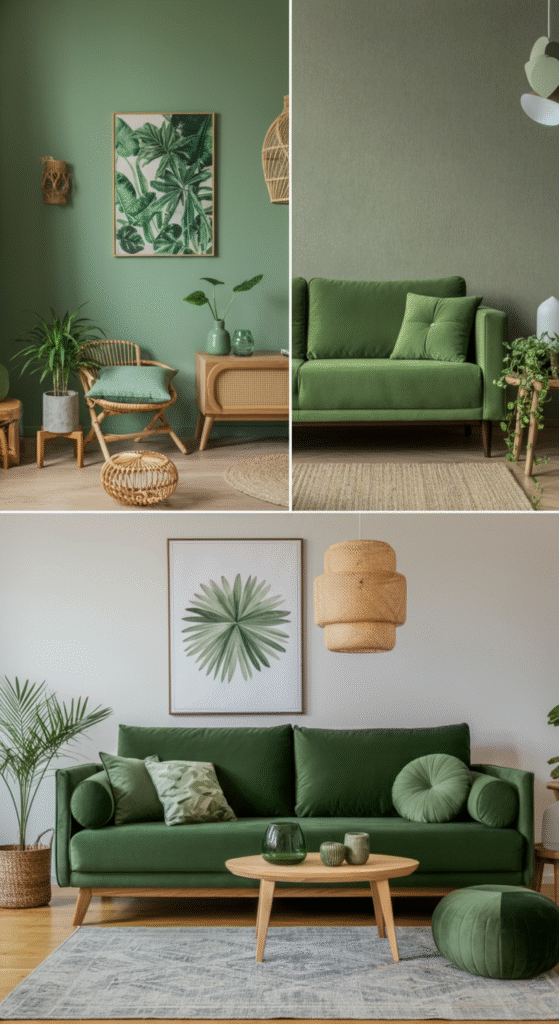
Whether you’re on a tight budget or have the luxury to splurge, there are ways to create a stylish green living room that fits your budget.
- Budget-Friendly Options: Start small by incorporating green through accessories like throw pillows, curtains, or rugs. You can also consider repainting one wall in a vibrant shade of green to make a statement without breaking the bank.
- Splurge-Worthy Choices: If you have a larger budget, invest in high-quality furniture like a green velvet sofa, luxurious green curtains, or statement artwork to elevate your living room design.
Final Thoughts on Green Living Room Inspiration
Incorporating green into your living room design offers a multitude of possibilities. From soft mint tones to deep emerald hues, green is a versatile color that suits all types of living rooms, whether you’re looking to create a serene retreat or a bold statement space.
So, what are you waiting for? Bring the refreshing, calming power of green into your home and start creating a living room that truly reflects your style and personality.
Frequently Asked Questions (FAQs)
What are the best shades of green for a living room?
The best shade of green for your living room depends on the ambiance you want to create. Light shades like mint or sage create a fresh, airy atmosphere, while deeper greens like emerald or forest green add sophistication and warmth. Olive green is perfect for a rustic or Mediterranean-inspired look.
How do I incorporate green into a living room without it overwhelming the space?
To avoid overwhelming your living room with green, start with smaller accents like throw pillows, rugs, or curtains. You can also use green as an accent wall or on furniture pieces like sofas or chairs, balancing it with neutral colors like beige, gray, or white. Natural light can also help soften the look of darker greens.
Can green walls make a small room feel bigger?
Yes! Lighter shades of green, such as mint or sage, can make a small living room feel more open and airy. These colors reflect light and create the illusion of space, making them ideal for smaller rooms or rooms with limited natural light.
Is green a good color for a living room if I want a relaxing atmosphere?
Absolutely! Green is known for its calming and soothing qualities. It’s often associated with nature, balance, and health, making it an ideal choice for creating a relaxing environment in your living room. A soft green, like sage or mint, can help reduce stress and create a peaceful space for relaxation.
How do I complement a green living room with other colors?
Green pairs well with a variety of colors. For a fresh and clean look, combine green with white or beige. For a more luxurious vibe, pair green with gold or brass accents. If you’re going for an earthy feel, try combining green with brown, tan, or other natural tones. Don’t forget to add pops of color through accessories like throw pillows or artwork.
